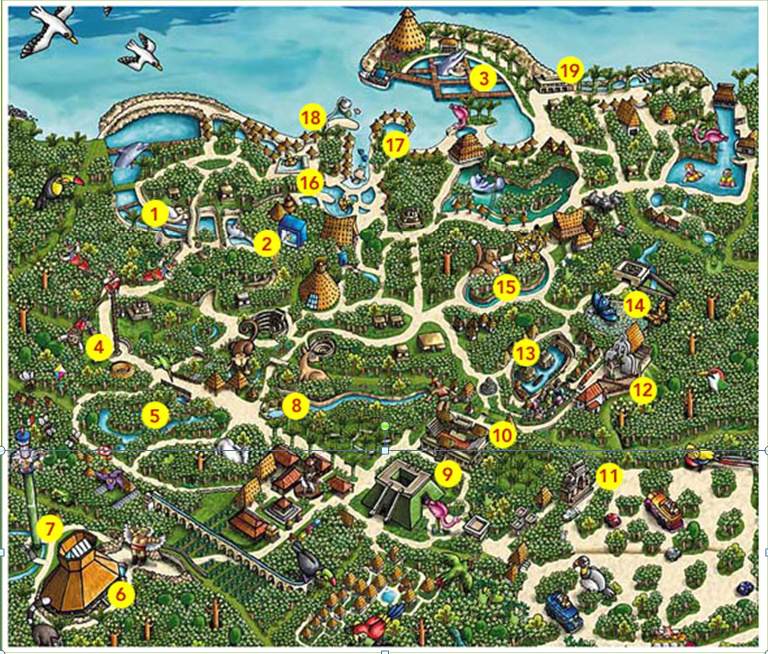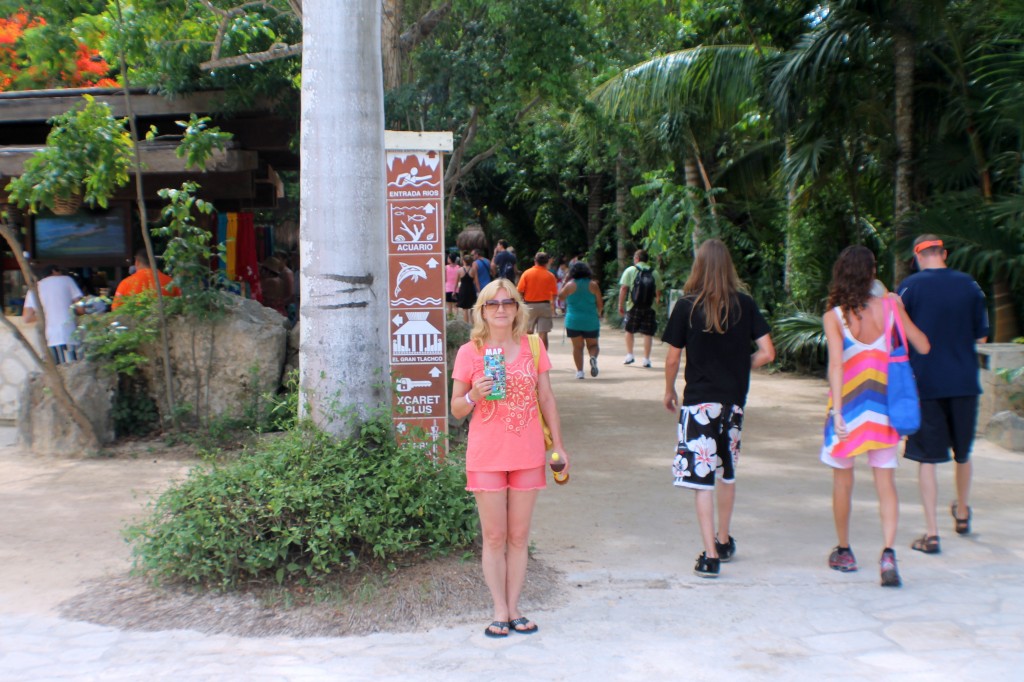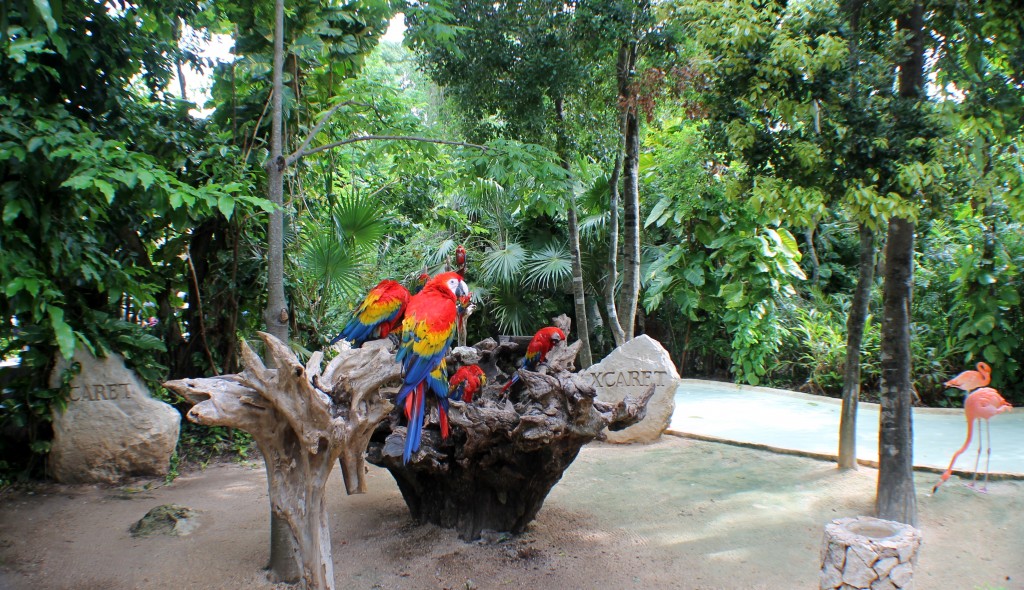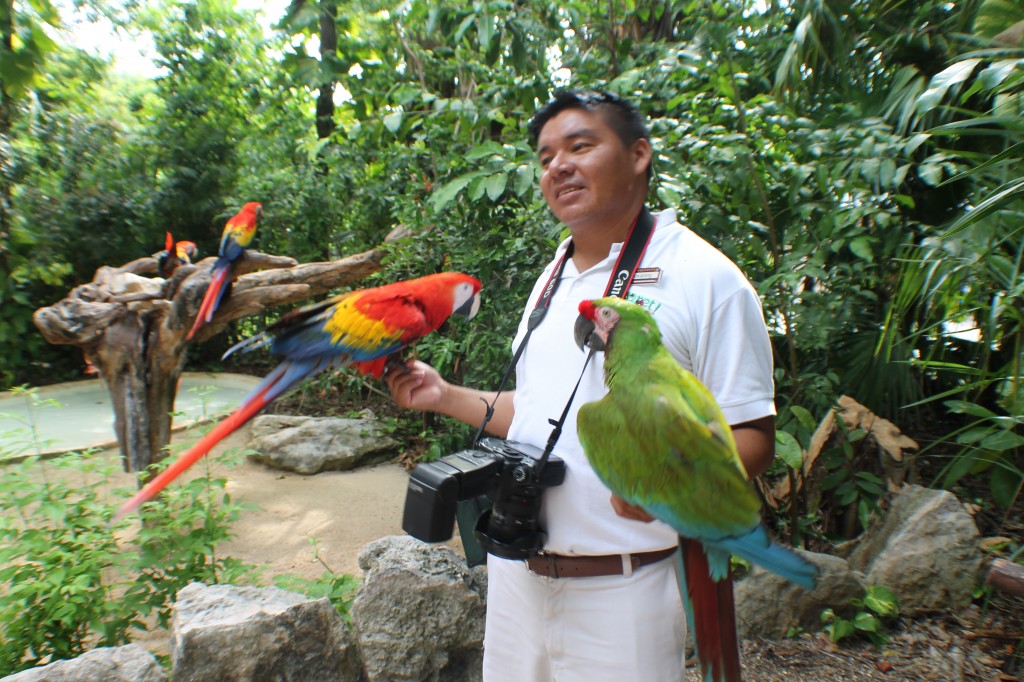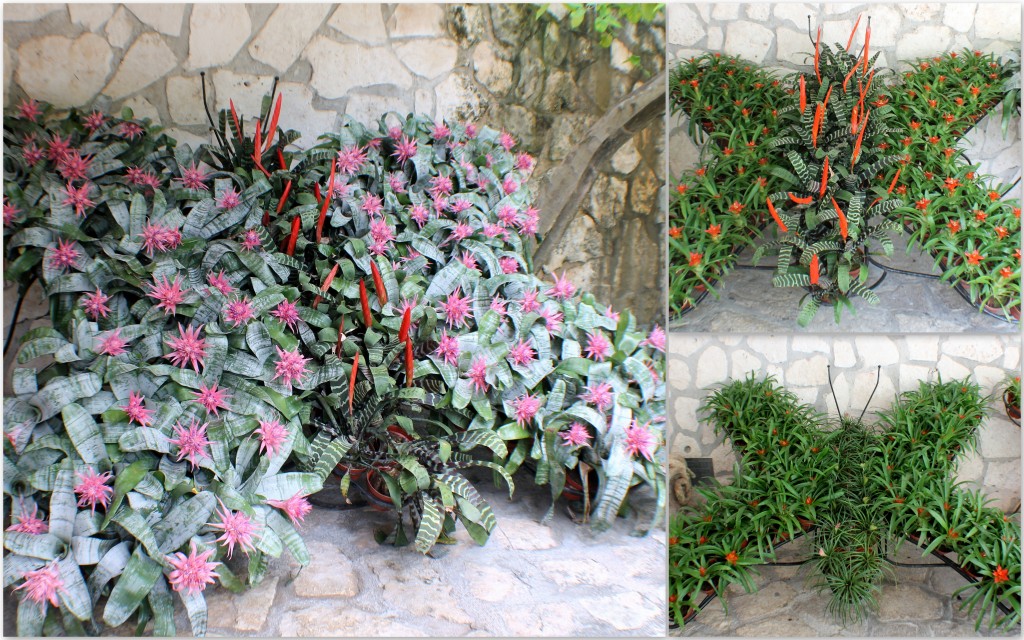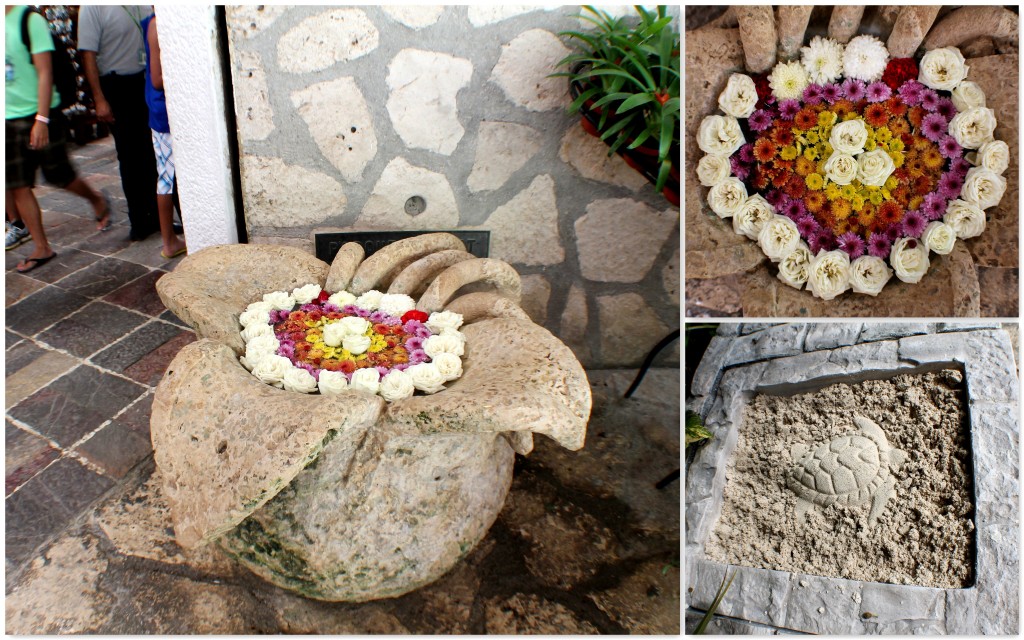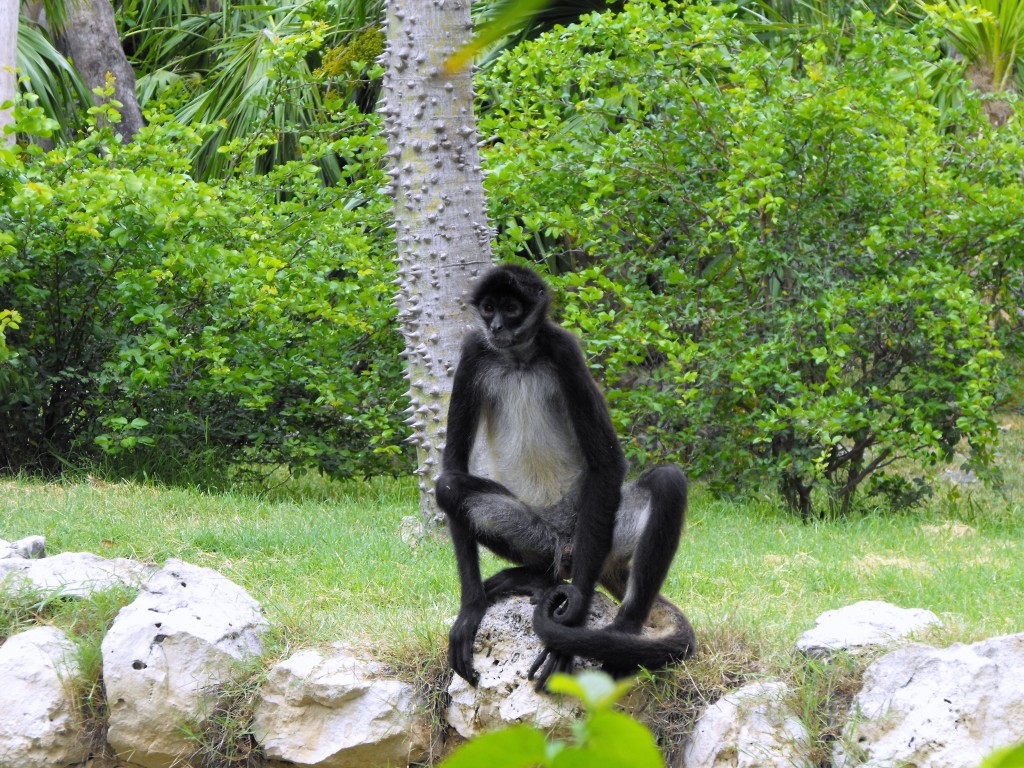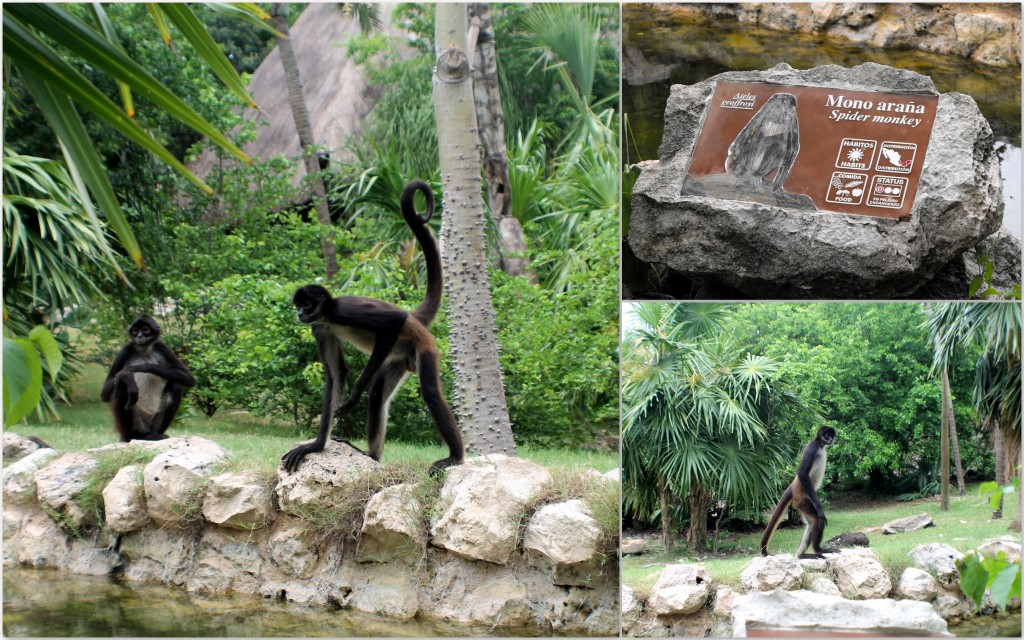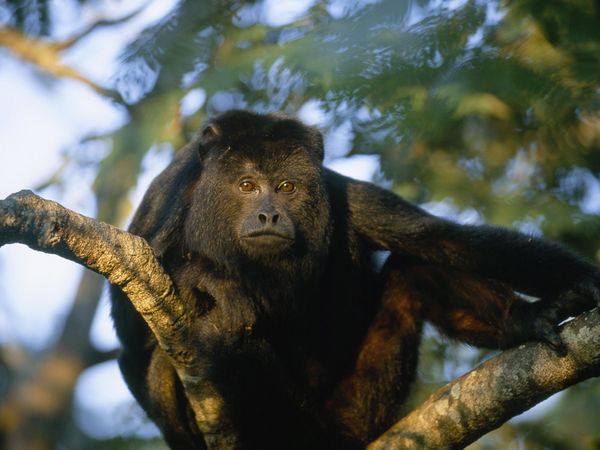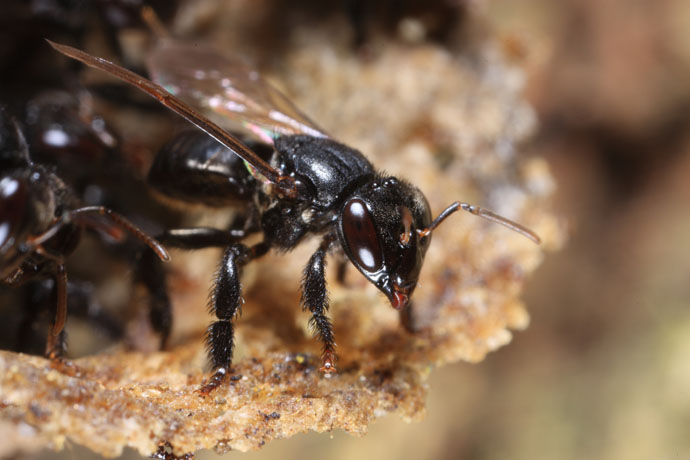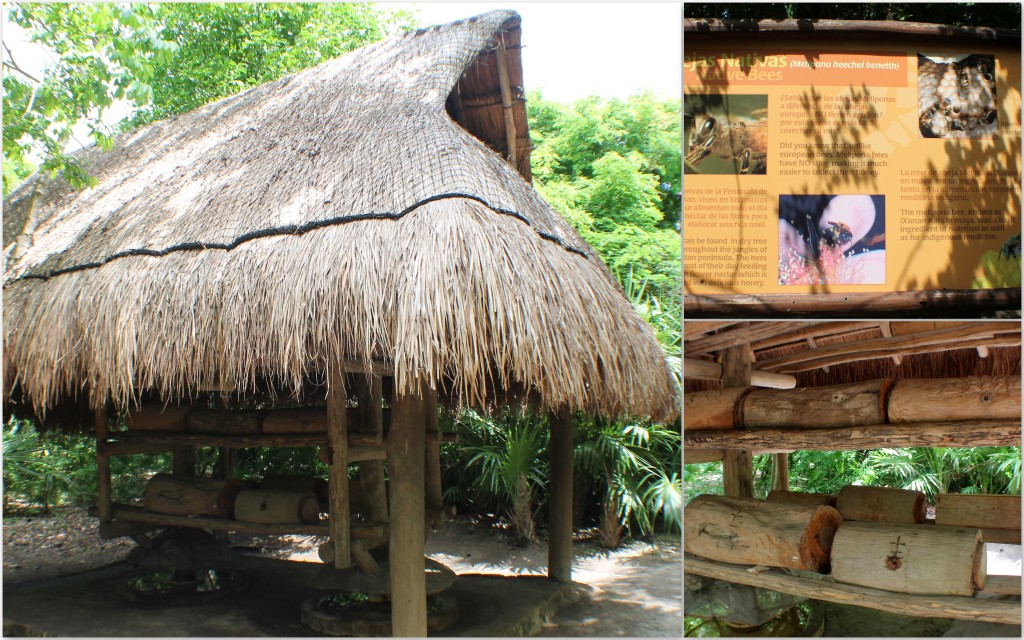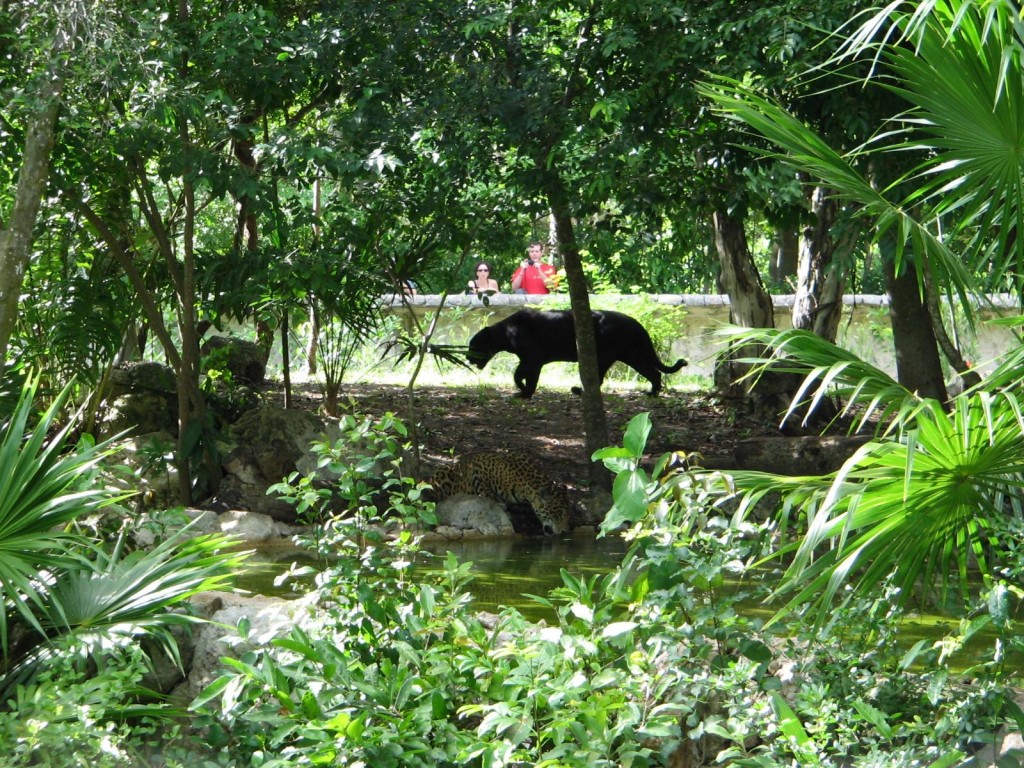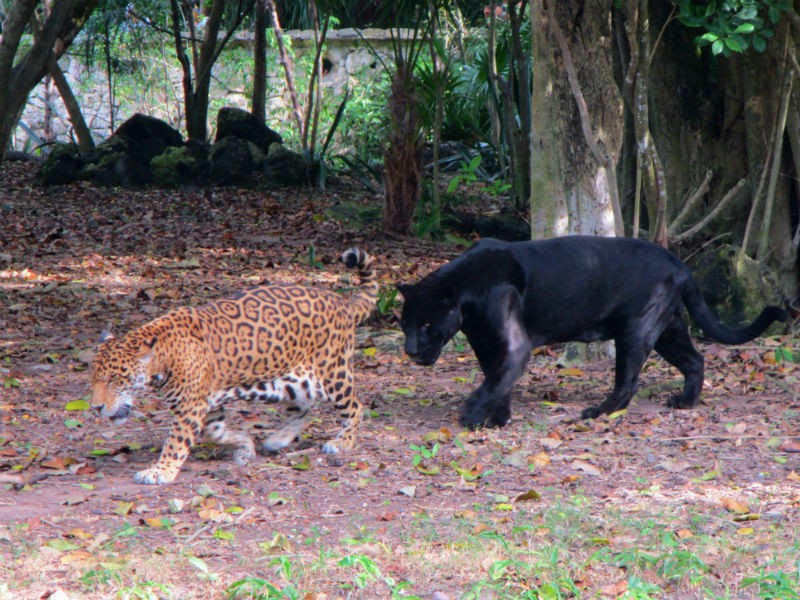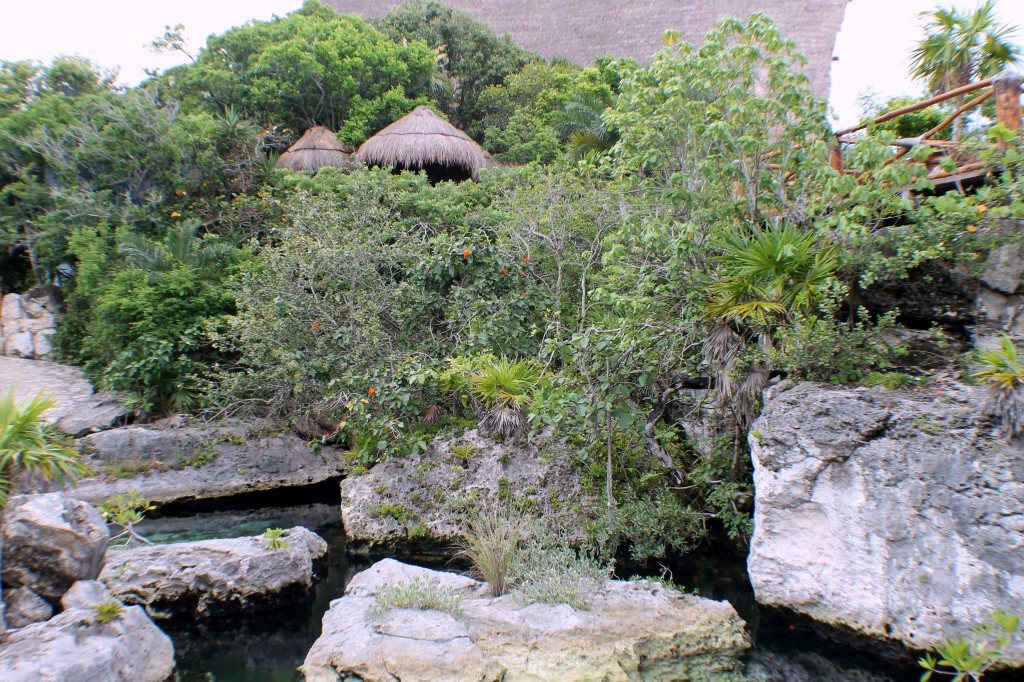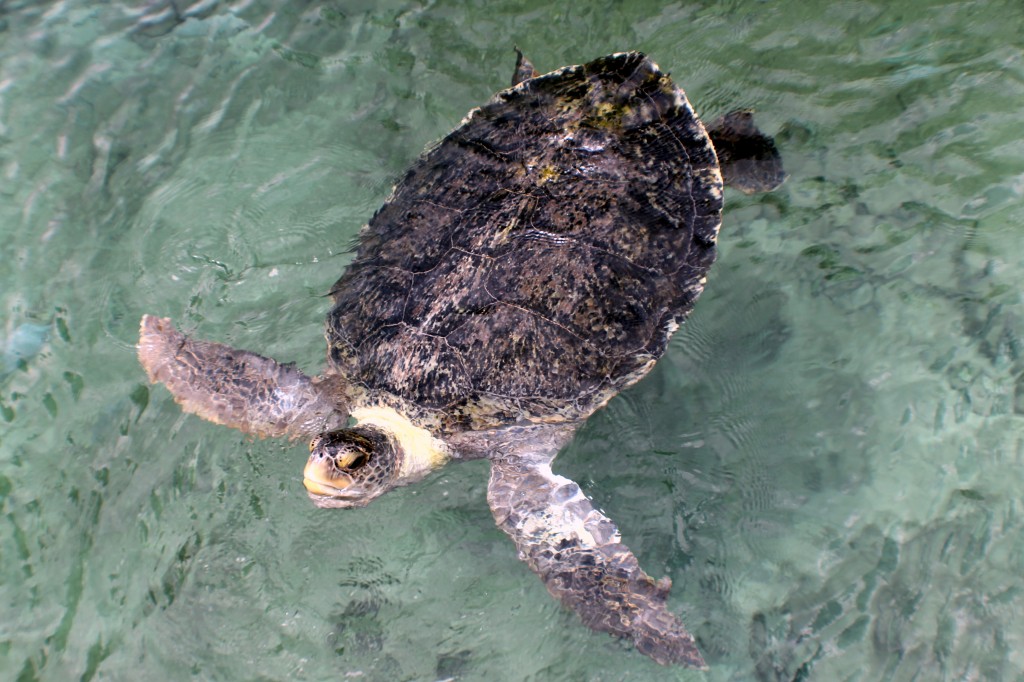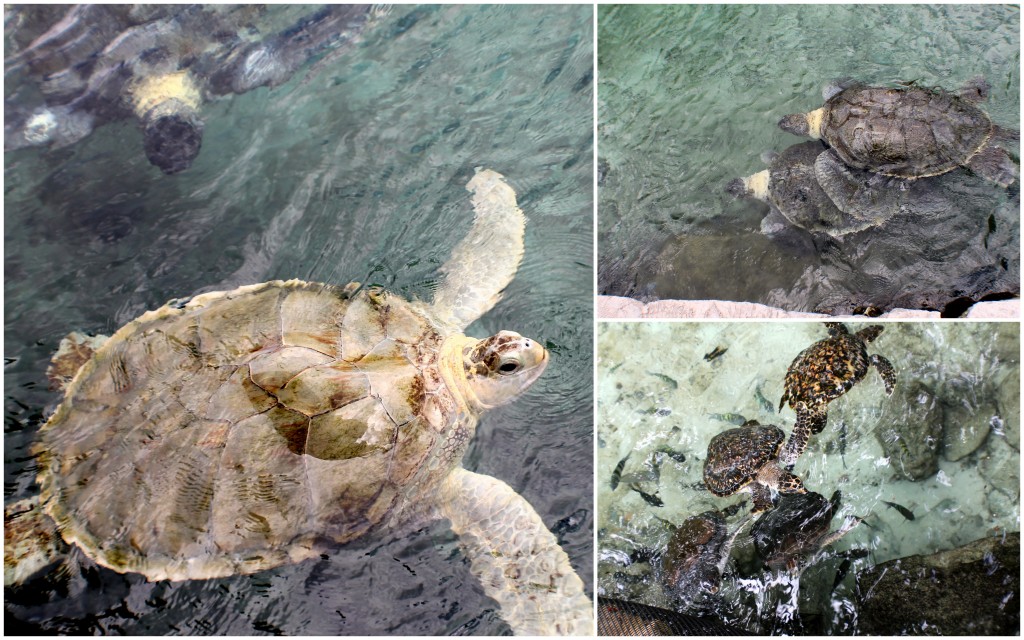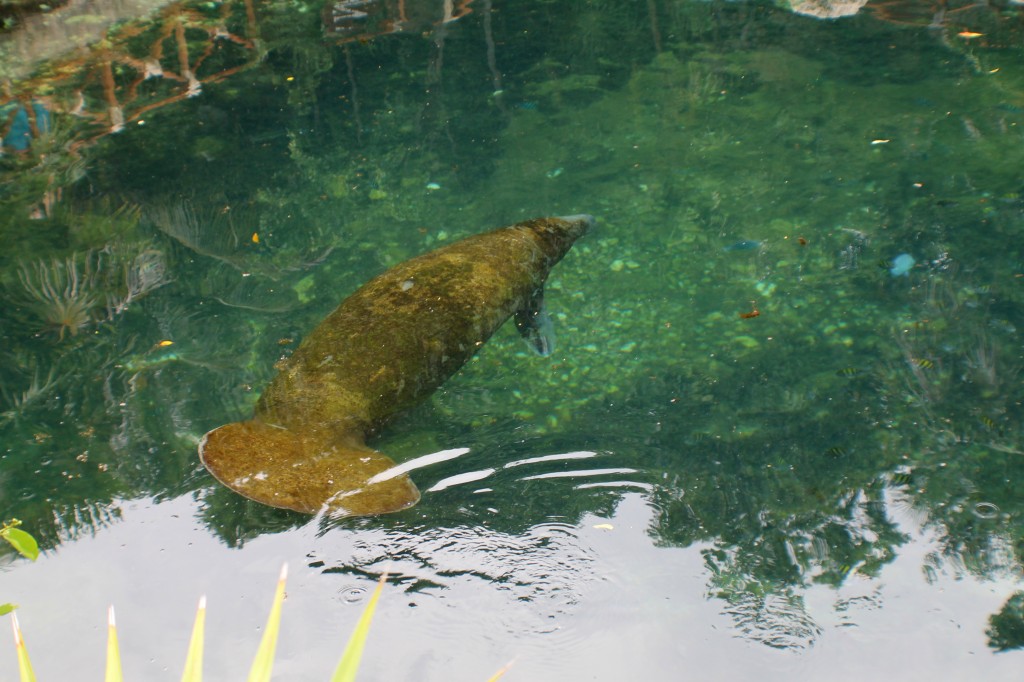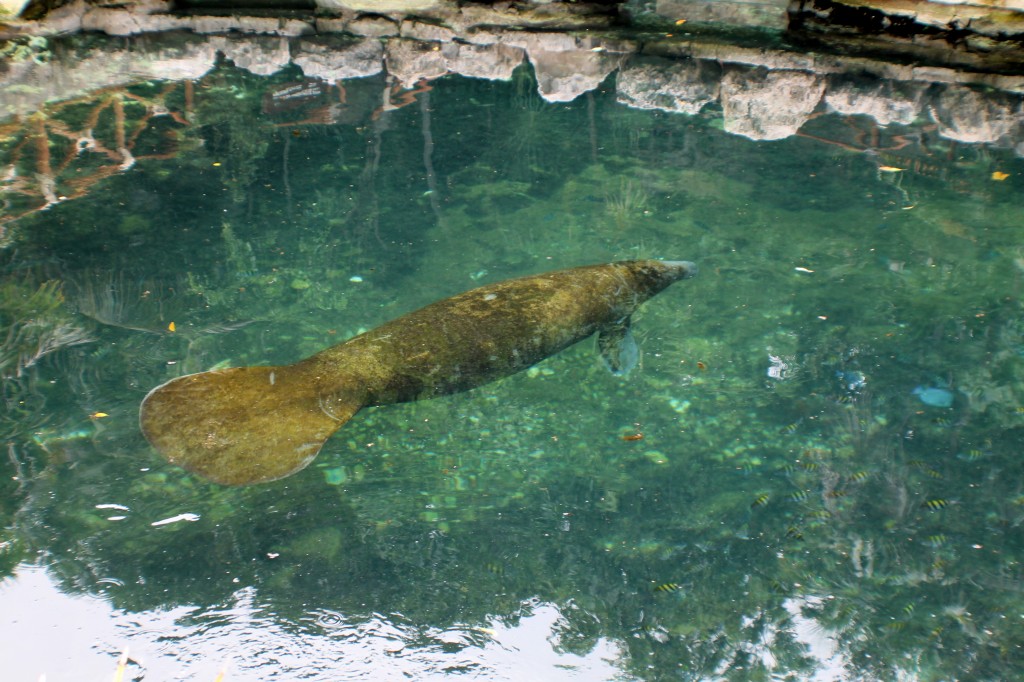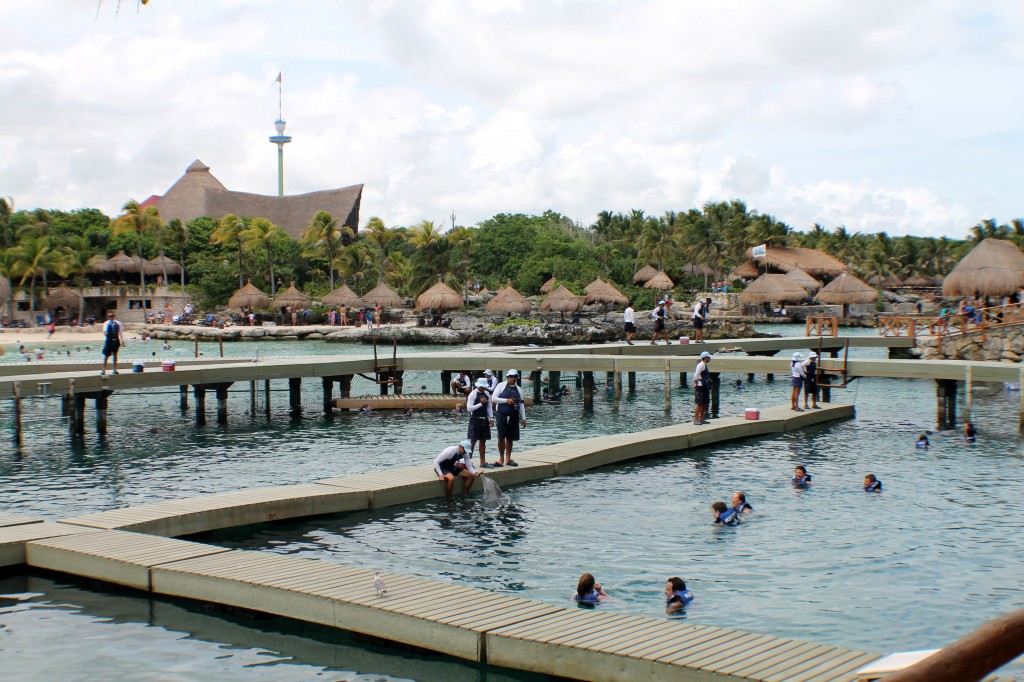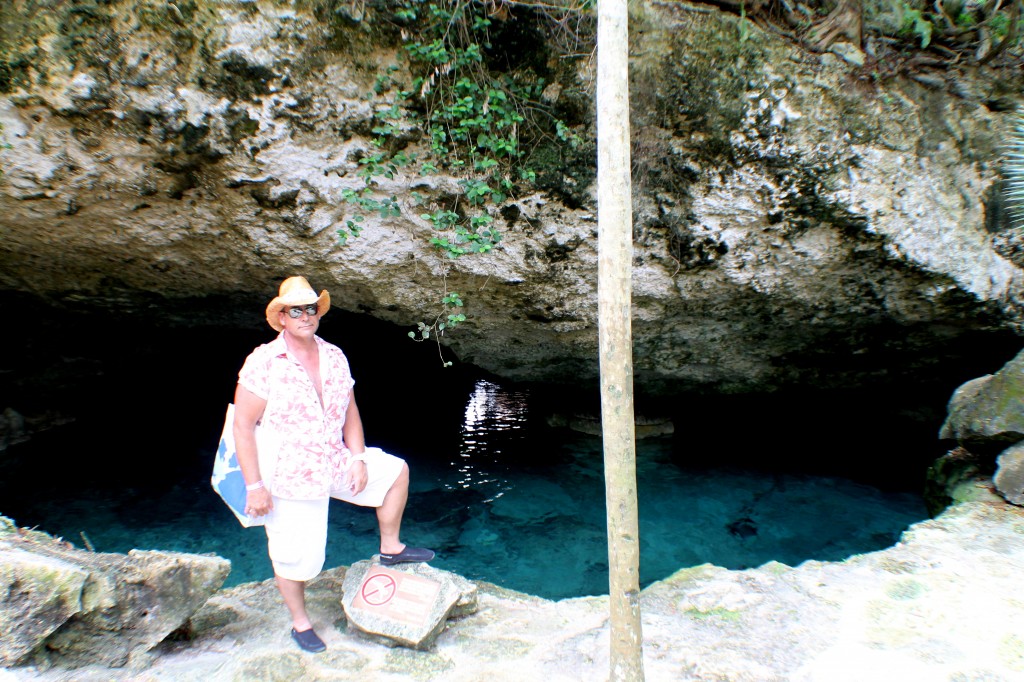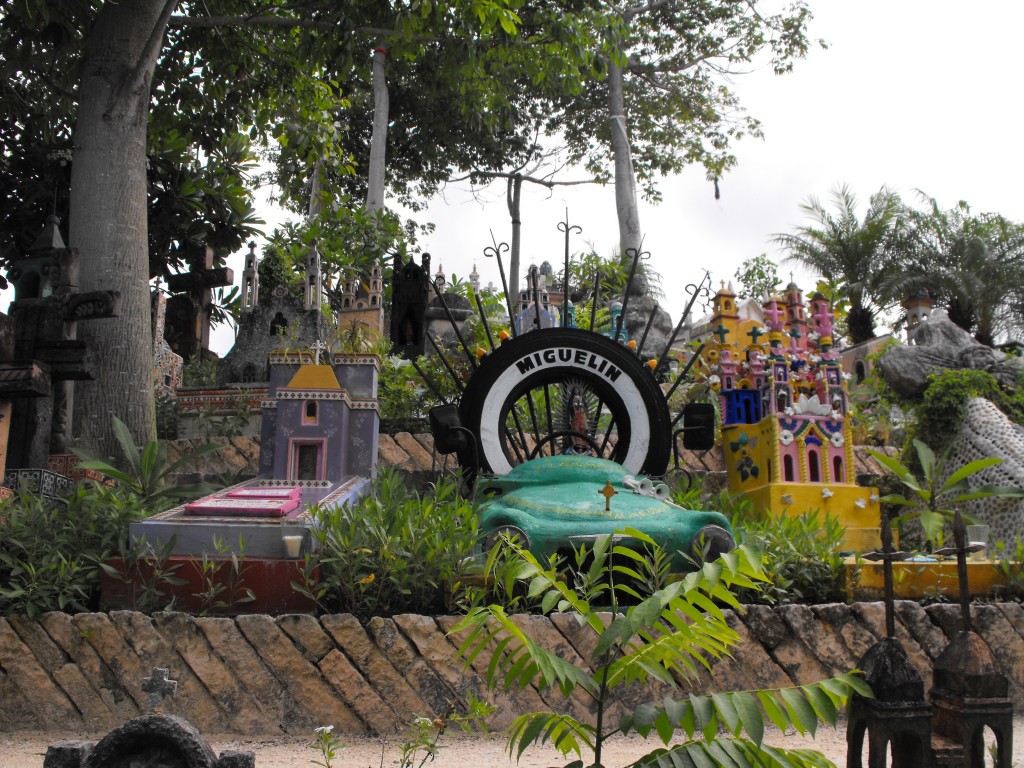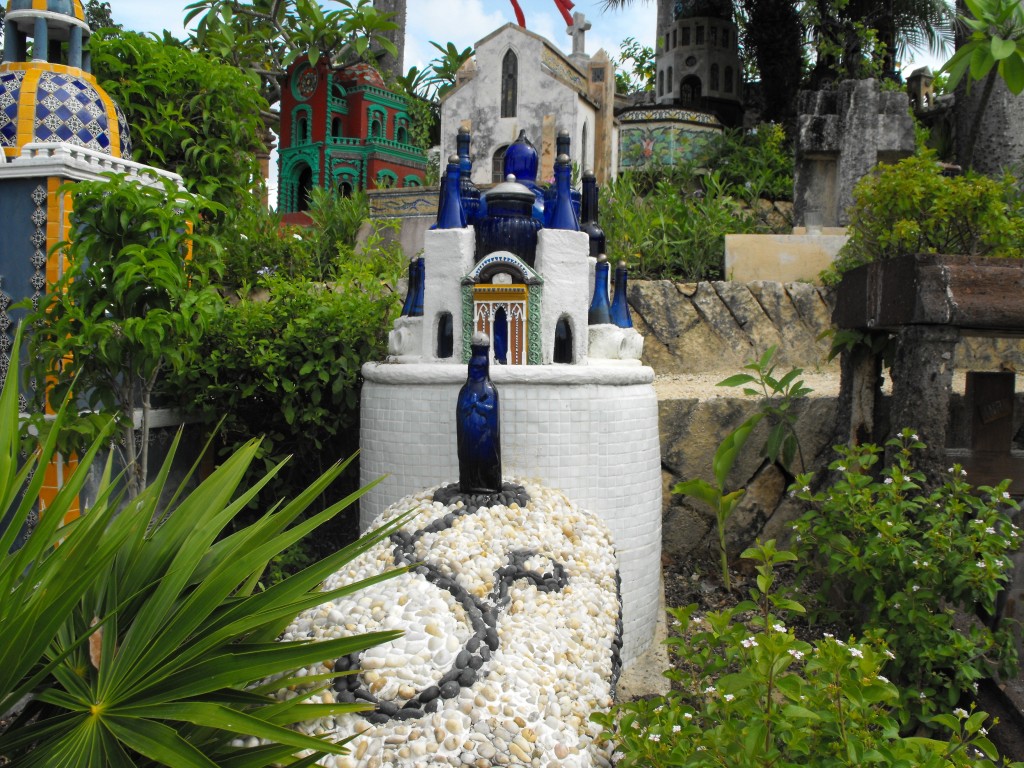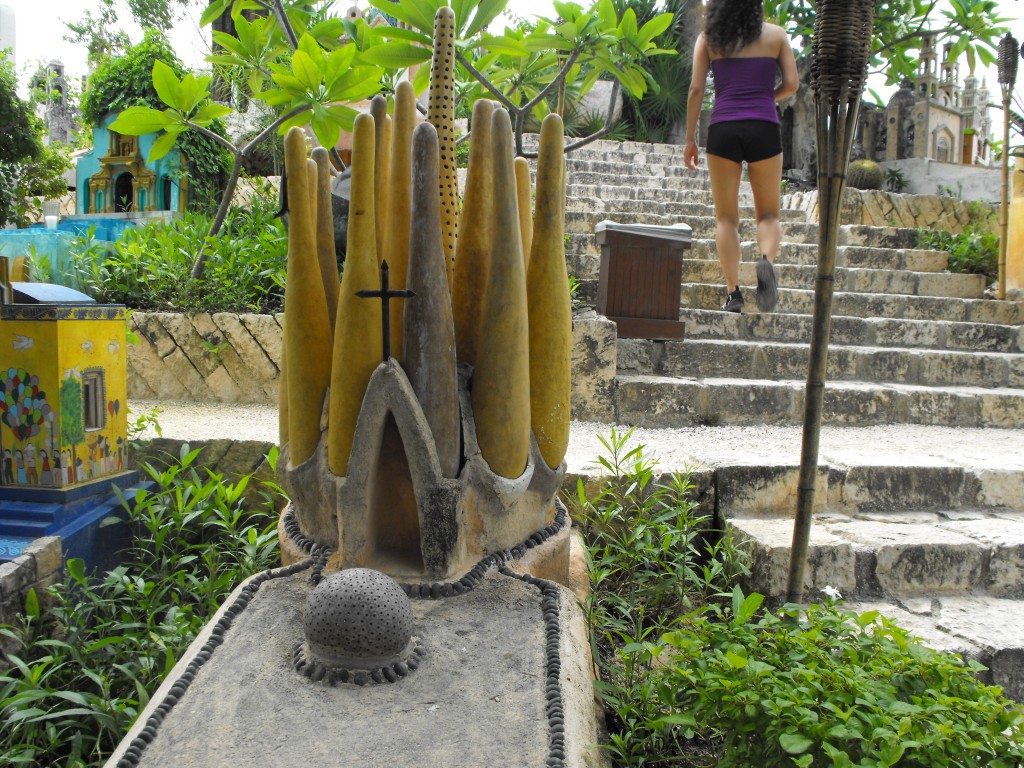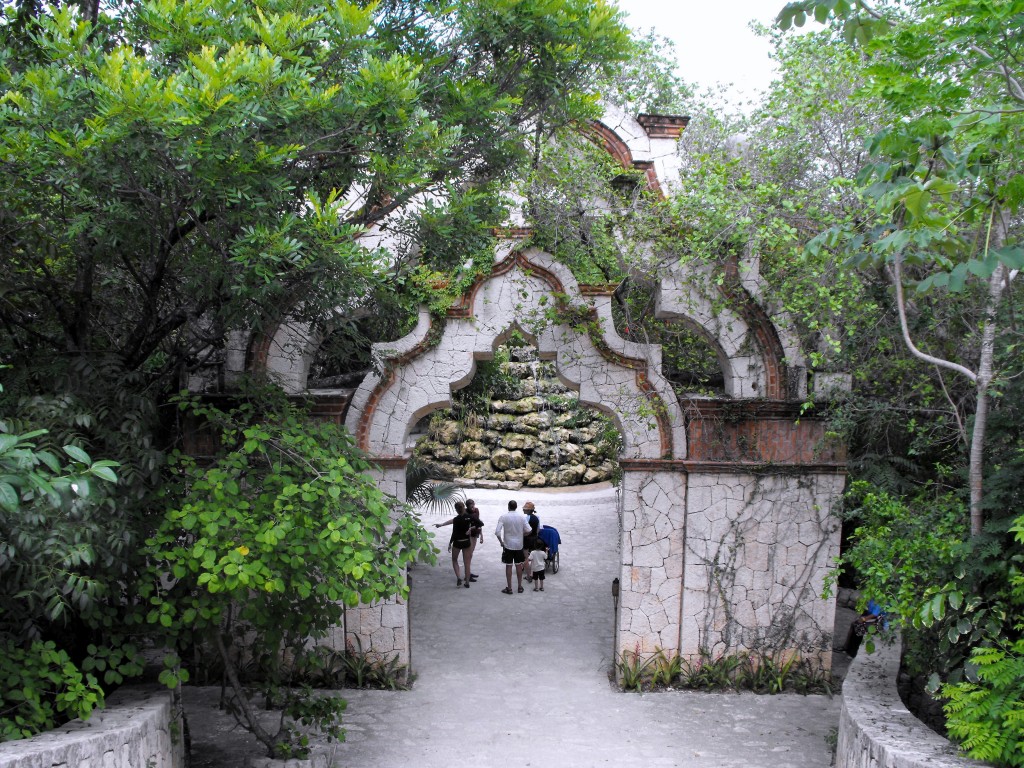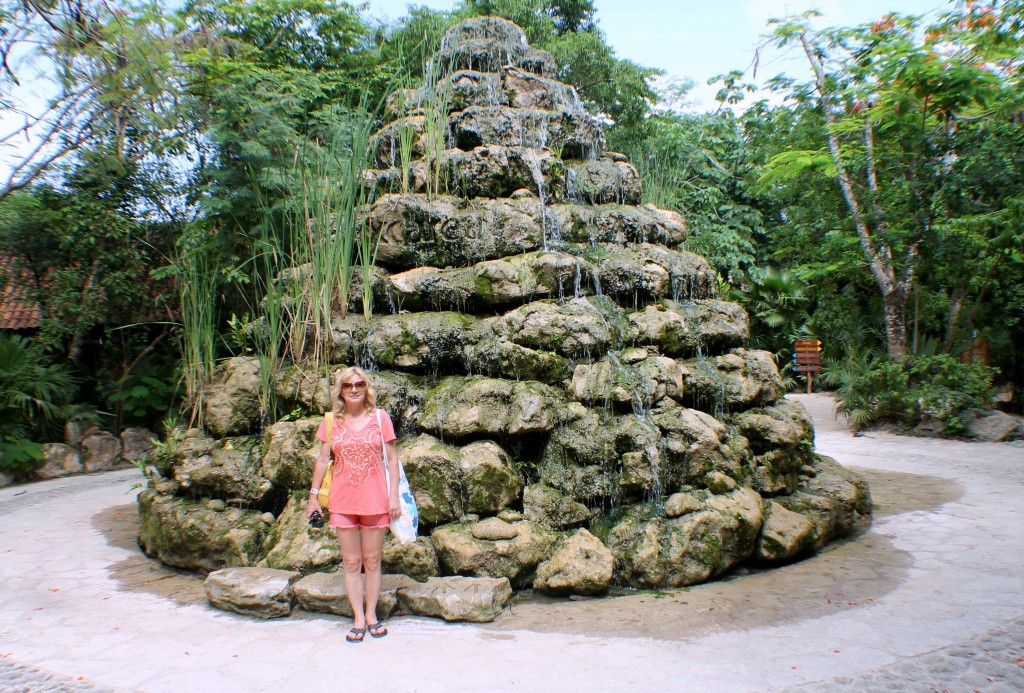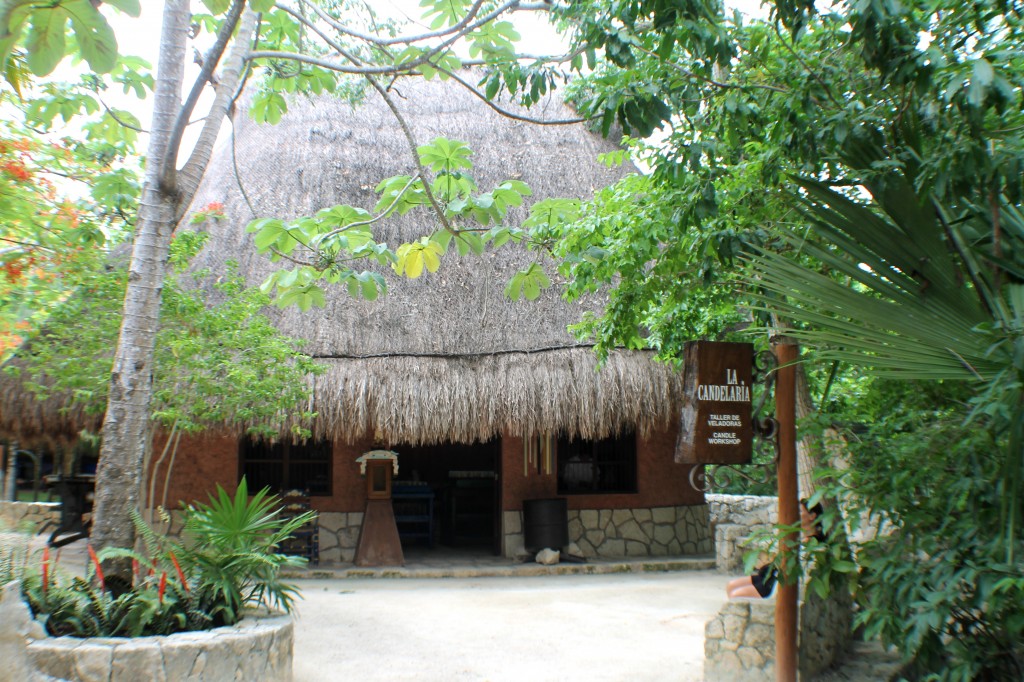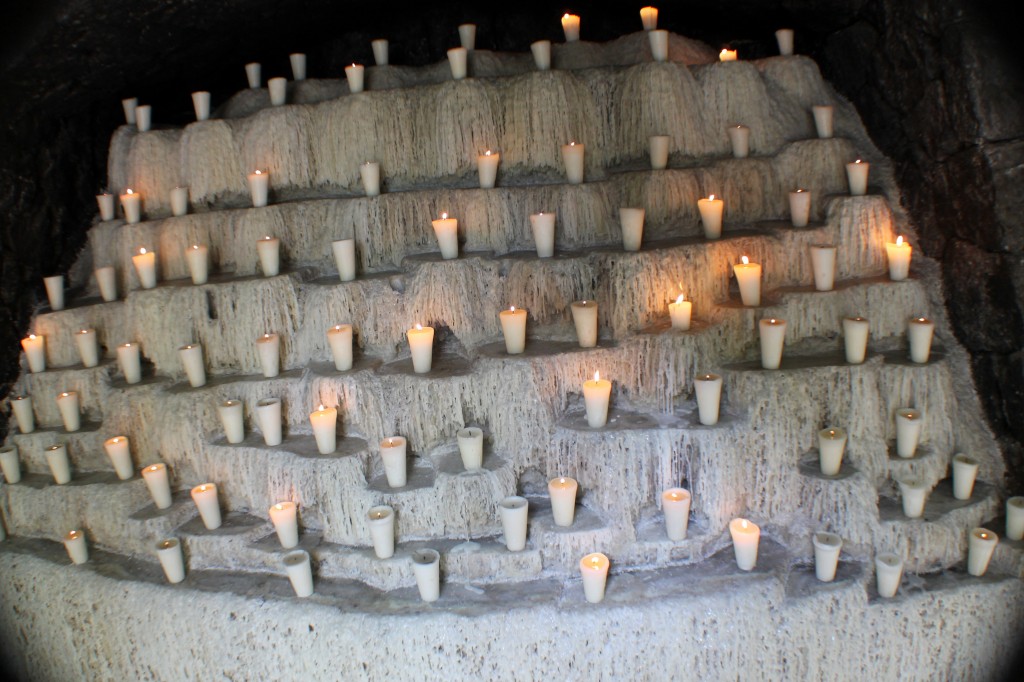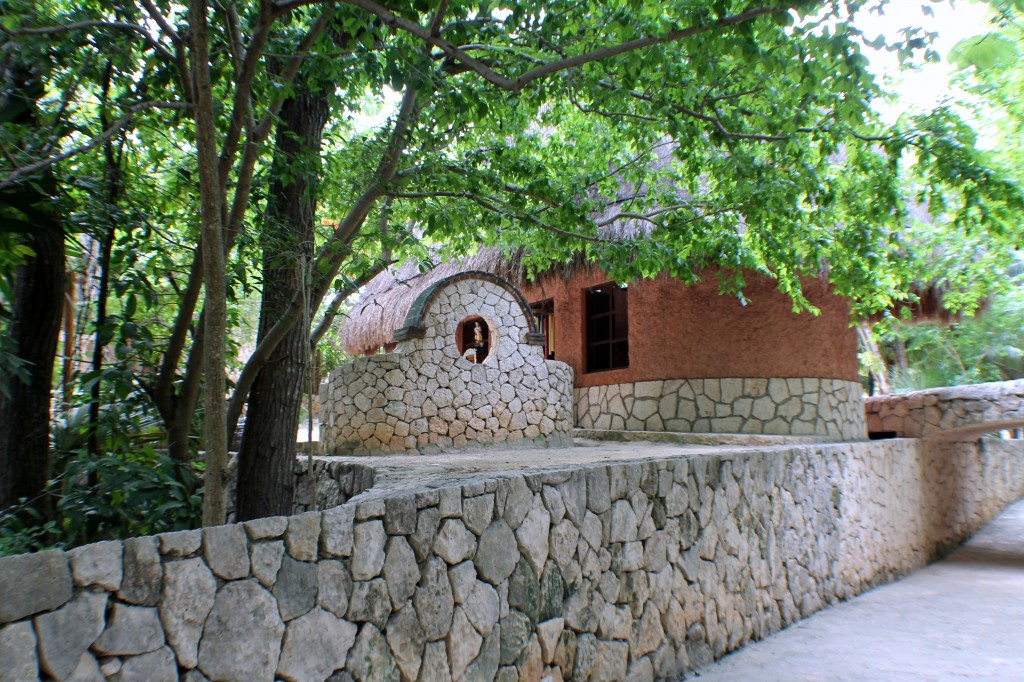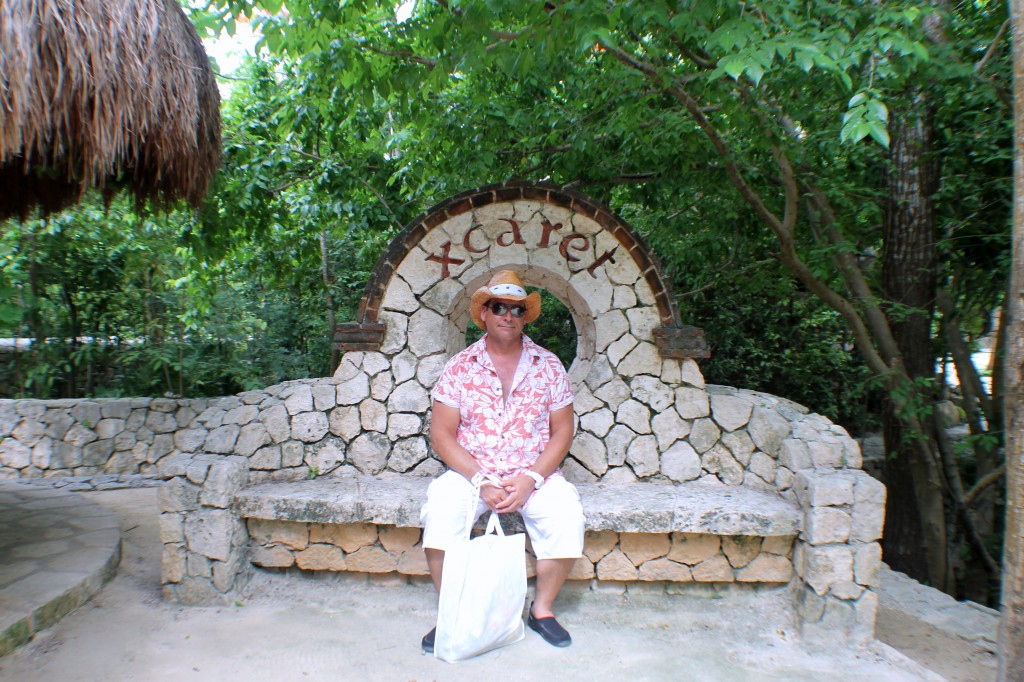Xcaret is a theme park in Riviera Maya, Mexico which offers a large variety of activities. Dave and I had Xcaret plus admission tickets to the park which included transport to and from Xcaret, park entrance, a buffet meal, access to all except extras, the park’s attractions and activities and Xcaret Night Show. It also included complimentary use of showers, beach loungers, hammocks, life vests, use of snorkeling equipment and a locker. It is an impressive and beautiful park known for its water and land attractions. We decided to skip the water activities and to see the park’s grounds instead. Here is a map of the park from xcaret-tickets.com.
|
1
|
Swim with Dolphins I |
8
|
Underground Rivers |
15
|
Jaguar & Panther |
|
2
|
Coral Reef Aquarium |
9
|
Museum |
16
|
Sea Turtles |
|
3
|
Swim with Dolphins II |
10
|
Mayan Ball Game |
17
|
Beach |
|
4
|
Papantla Flyers |
11
|
Main Entrance |
18
|
Sea trek |
|
5
|
Paradise River |
12
|
San Francisco de Asis Chapel |
19
|
Scuba Diving, Snorkel |
|
6
|
Xcaret Night Performance |
13
|
Mayan Village | ||
|
7
|
Scenic Tower |
14
|
Butterfly Pavillion |
We couldn’t see everything that park offers in one day, but we enjoyed this Mexican gem full of culture, nature and shows. Xcaret Tour is the most famous in Mexico and at the Caribbean islands amusement park. As we entered the Xcaret park we were handed a map that shows where all the exhibits and attractions within the park are located. This is a tremendous help because Xcaret is a “green zone” with virtually all its features hidden down manicured paths through the green. Xcaret also maintains its own nursery where they raise native plant species to supplement the natural landscape.
Xcaret’s photographer was offering to take a picture with the beautiful tropical birds. We couldn’t resist it and for $12.00 had our picture taken there. 🙂
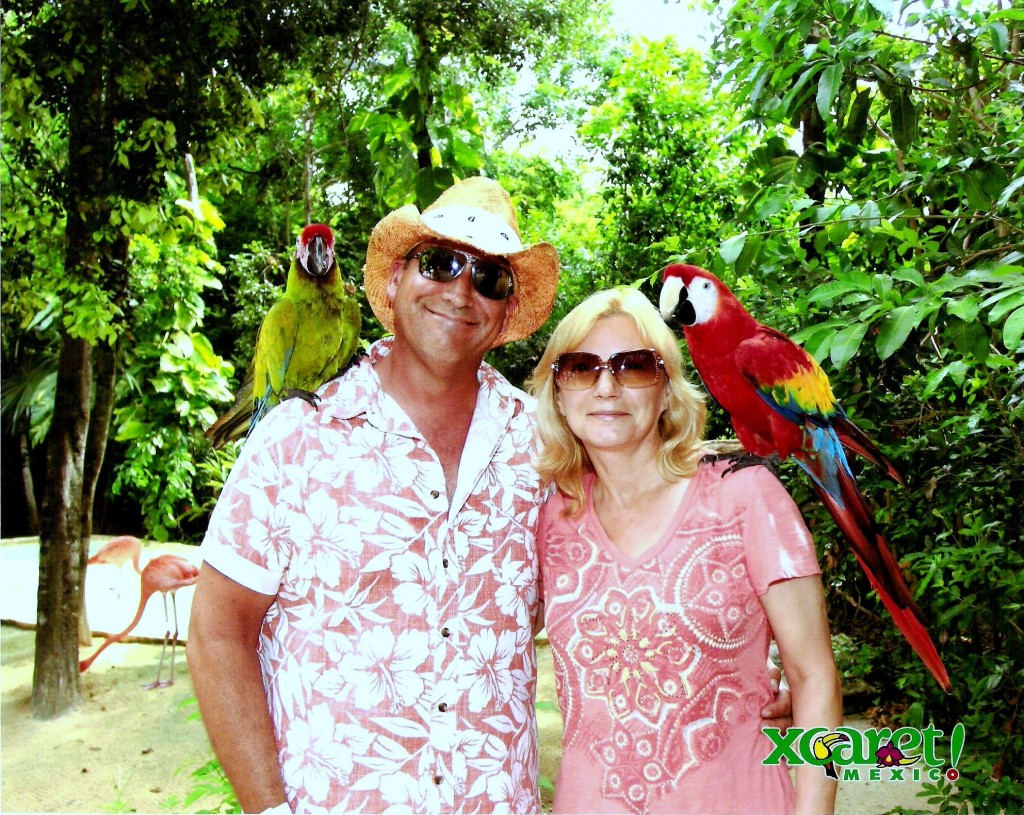
I was amazed by Xcaret’s decorations, such as those in the pictures below; the potted plants arranged in butterfly shaped frames. It seems so simple, but looks so pretty.
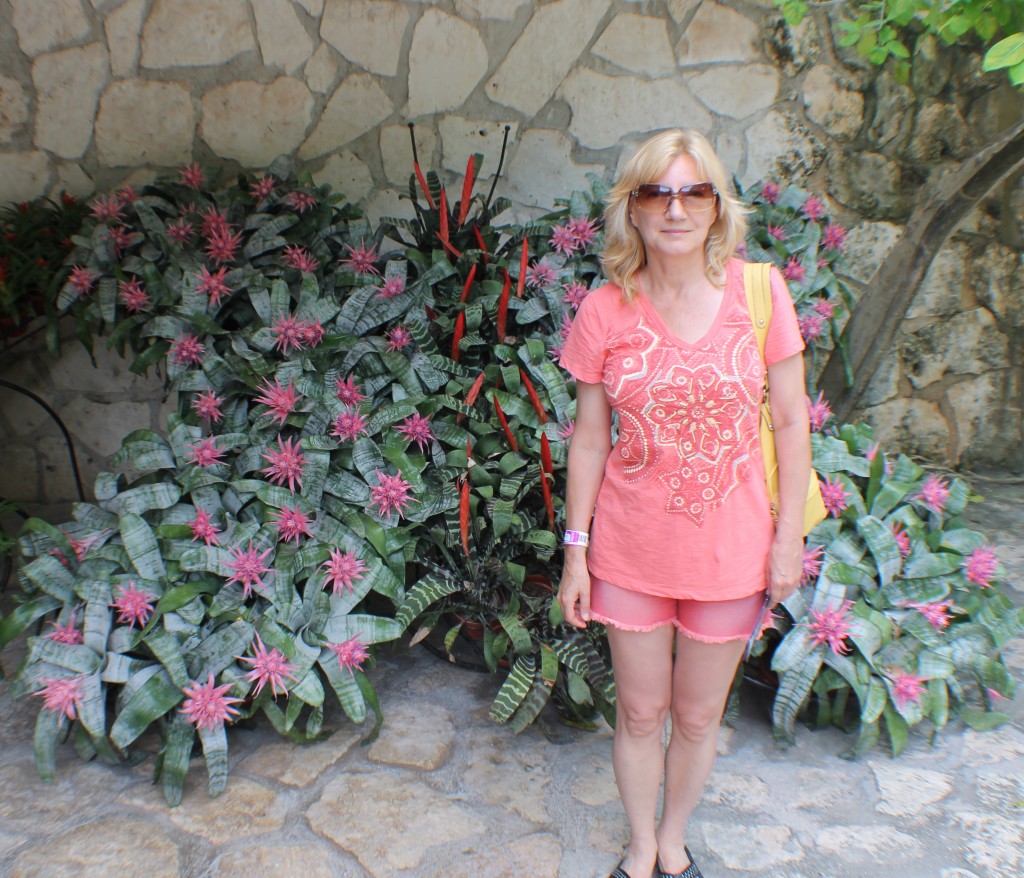
Here is another flower arrangement floating in water on top of a stone vase and even a turtle made from sand on top of an ash-tray. 🙂 Dave and I didn’t have any preferences in choosing which park attractions should be seen first, so we were just walking through the park enjoying the sightseeing. Shortly, we were passing through the monkey island and stopped to observe these amusing creatures.
Monkey Island is home to Spider monkeys and Howler monkeys. The Spider monkey is named due to its disproportionately long limbs. Although the Spider monkey is native to the Yucatan peninsula, most of its natural habitat has been destroyed for farming and these precious animals are now endangered. Xcaret Eco Park provides a very necessary service and home for them. Here is a couple of interesting facts about those monkeys. According to Xcaret’s site the Spider monkey barks like a small dog when it sees a human and a female Howling monkey can be heard for five and a half miles. Here are some pics of spider monkeys:
The highly vocal howler monkey is the largest of the New World monkeys. We couldn’t take a picture of howler monkey, it disappeared too quickly. Here is a pic of a howler monkey from nationalgeographic.com:
Xcaret Apiary isthe bee-farm, which is dedicated to breeding Melipona, known by the Mayas as Xuna Kab (Queen Bees). In the Xcaret apiary the visitors get to meet the stingless Maya bees, which are protected in this special area. These noble bees produce a high quality, perfumed honey. They look black and smaller than the bees I’ve seen before. And we didn’t experiment if they sting or not. 🙂 Here is a pic of a Mayan bee from thehoneygatherers.com:
Jaguar Island is a large “cageless” area at Xcaret. It is literally an earthen island, surrounded by a very deep and narrow valley. Here the visitors have a chance to see both the black jaguar and the spotted jaguar from across the moat encircling jaguar island. The park provides telescopes, strategically mounted along the pathways surrounding the island to get a good close-up. Jaguars and pumas are among the most powerful cats in the world and are indigenous species to the Yucatan peninsula. Jaguars are the 3rd largest cat in the world after lions and tigers, and seeing them at Xcaret is supposedly an unforgettable experience. Unfortunately, we didn’t see them. Every time we walked by, we could see only this sleeping puma. 🙂
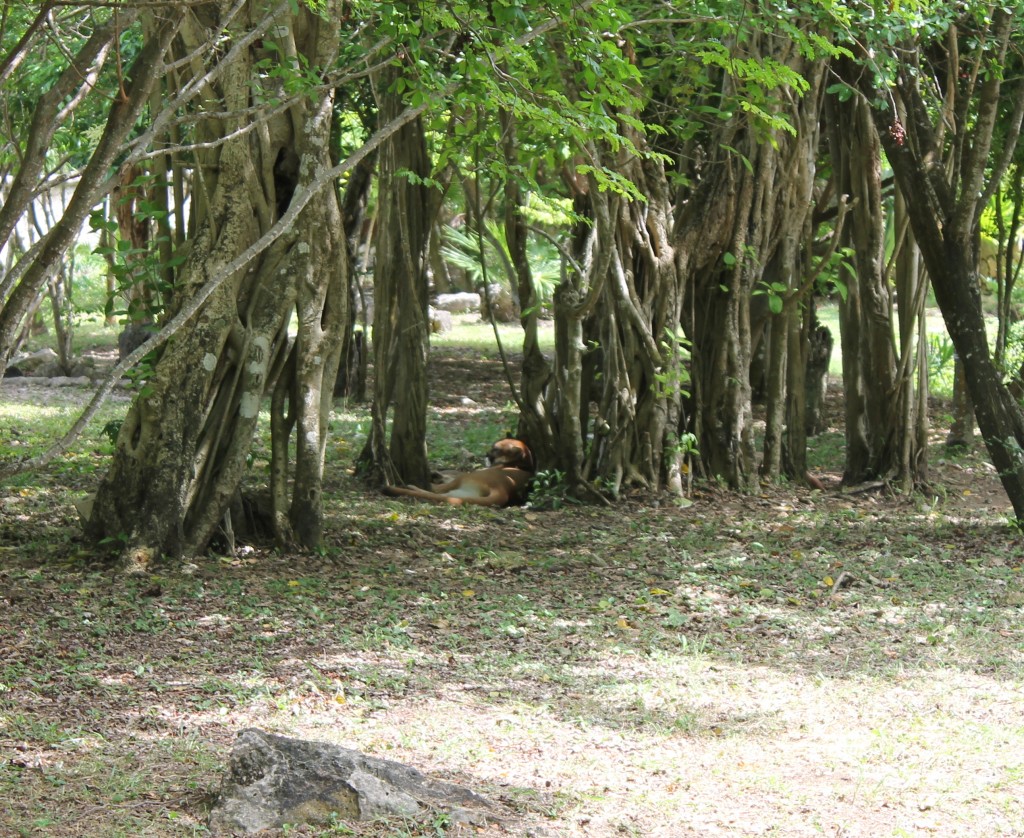
I found a couple pictures posted by Xcaret visitors, who were actually lucky enough to see the jaguars.
Then, we took quite a walk to the lagoon to see the sea turtles and manatees.
Sea Turtles. The beaches of Quintana Roo are an important nesting habitat for marine sea turtles, especially loggerhead turtles, green sea turtles and hawksbill turtles. At Xcaret we had the opportunity to see these graceful swimmers up close. There are separate pools for the baby turtles. They are so cute. 🙂 Xcaret park runs The Sea Turtle Conservation Program which aims to protect this endangered species. Xcaret also has a specialized health care unit for turtles with problems of dehydration and injuries caused by attacks from animals or humans. The sea turtle hospital has developed special techniques such as treating serious injuries through the use of honey, which is a very effective natural antiseptic. This eco-park invites student groups as well as park visitors to participate in the release of 15 month old turtles into the sea.
The Manatee’s Lagoon is home to a couple of peaceful mammals as seen in the water bellow. The principal species of manatees found in Mexico is the Caribbean manatee, which the visitors can admire at a crystal clear lagoon in Xcaret. Manatees in Mexico are mammals that live mainly in lagoons and mangroves, that swim very slowly up to 4 miles per hour in groups of 2 to 4 animals. The same as herbivorous mammals, manatees search for plants, algae and grass that grow under the warm waters of the Gulf of Mexico and the Caribbean. A peculiar behavior of female manatees is the way they hold their young in their fins to nurse, just like a mother breast-feeding a baby. Today they are a species in danger of extinction due to illegal hunting, uncontrolled nautical traffic, fishing and the destruction of their habitat.
Swim with Dolphins is an interactive program, where swimmers can experience dolphins’ strength as they push them through the water, also they may be surprised by dolphins jumping over their heads. The visitors will seal their friendship with these happy dolphins with a kiss; dolphins will sing for you and do incredible flips in the air. Dave and I participated at the same program at Xel-Xa and it was an unforgettable experience. My post about it can be viewed here.
We saw a beautiful grotto in the Lagoon area.
Archaeological Site Castillo is represented by several small Maya temples within Xcaret’s 80+ hectares (200 acres). Xcaret is a Mayan word meaning “small inlet”. This location was at its peak from 1400 to 1517 A.D. when it was known as Polé. It is believed that the Mayas bathed in the inlet to purify their bodies before traveling to Cozumel by canoe to worship Ixchel, the Goddess of Fertility.
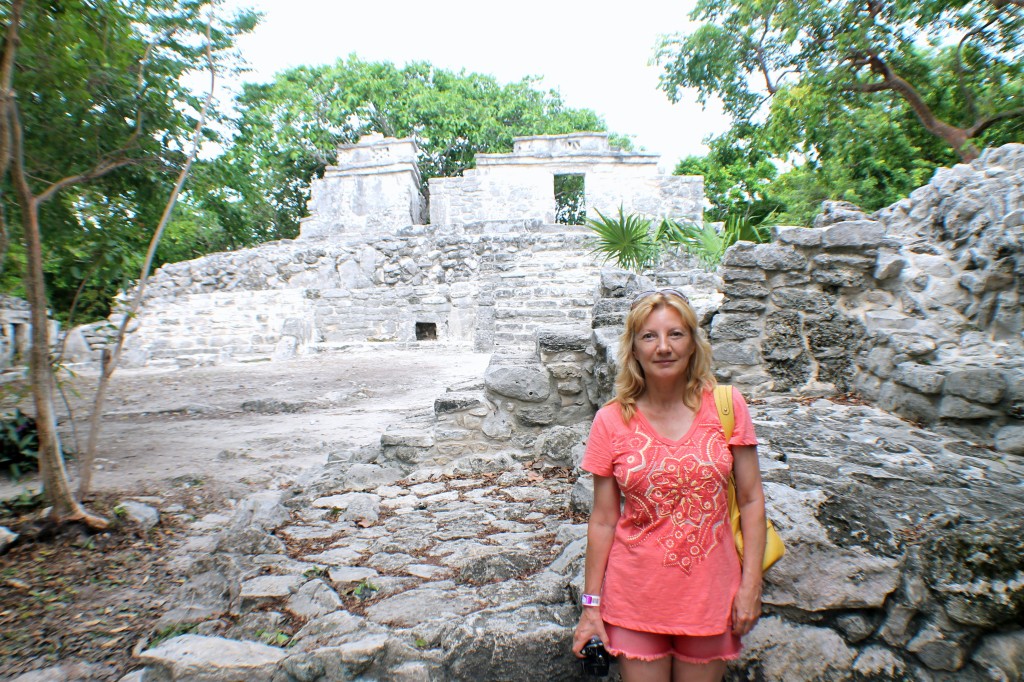
The Mexican Cemetery at Xcaret integrates harmoniously with a replica of a Mayan Village. There wasn’t much going on in the village at the time, so we went to explore the colorful cemetery next to it. This replica of a Mexican cemetery is located on a hill with a winding path leading to the top. There are 365 graves in a spiral configuration (like a beehive) with a catacomb underneath. I want to emphasize that this is a replica, there is nobody buried on this cemetery. The tombstones are imaginative and whimsical and evokes the playful attitude Mexicans have towards death. In Mexico, cemeteries are places for remembrance and even a little partying on the Day of the Dead. The cemetery in Xcaret is beautifully decorated and a focus of activities during Xcaret’s Festival of Life and Death Traditions.
There is a beautiful waterfall right near the Mayan cemetery exit.
Xcaret sculpture workshop in the Mayan village.
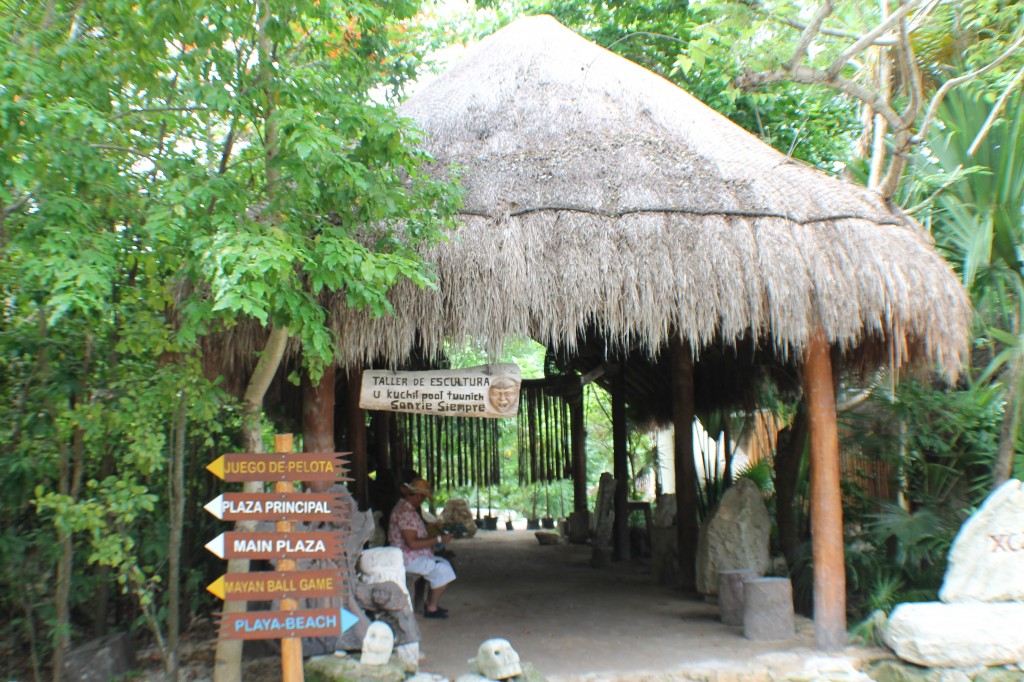
Did you know that the candles that are used in the Mexican cemetery are produced at Xcaret’s candle workshop called “La Candelaria”? 400 small candles and 160 large candles are produced per day.
That’s a lot of candles under the cemetery and a lot of melted wax.
A part of the Mayan village at Xcaret.
To be continued…
